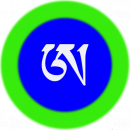So basically i should use auto suggestion to stay still after awakening from a dream. Then directly after waking up i do the separation techniques.. |
|
Results 1 to 25 of 27
Thread: The Phase Blew Me Away
Hybrid View
-
05-02-2015 04:43 PM #1Banned Achievements:




- Join Date
- Mar 2015
- Gender

- Location
- Collapsed Dimension
- Posts
- 203
- Likes
- 166
- DJ Entries
- 5
Last edited by TDHXIII; 05-02-2015 at 05:09 PM.
-
05-02-2015 05:48 PM #2Moderator

 Achievements:
Achievements:








- Join Date
- Sep 2013
- LD Count
- 327
- Location
- The Present Moment
- Posts
- 5,456
- Likes
- 6945
- DJ Entries
- 960
The closer to lucidity you are in the dream as you awake, the more likely you'll awaken without extreme disorientation where it is very easy to start moving without thinking about it. If I'm really totally non-lucid upon waking then I find waking very disorienting and I usually move before I realize what's going on. But I do not focus on noticing wakings. It is one of my goals though, as I think DEILD/Phase like technique in the late morning is a really fabulous way to get lots of LDs.
But for DEILD, moving a little is not a guaranteed loss of the DEILD opportunity. It's not ideal, but it's not fatal. Much more important is keeping that dreamy/drowsy mindset and just drifting right back off to sleep.FryingMan's Unified Theory of Lucid Dreaming: Pay Attention, Reflect, Recall -- Both Day and Night[link]
FryingMan's Dream Recall Tips -- Awesome Links
No amount of security is worth the suffering of a mediocre life chained to a routine that has killed your dreams.
"...develop stability in awareness and your dreams will change in extraordinary ways" -- TYoDaS
-
05-02-2015 06:19 PM #3Banned Achievements:




- Join Date
- Mar 2015
- Gender

- Location
- Collapsed Dimension
- Posts
- 203
- Likes
- 166
- DJ Entries
- 5
-
05-02-2015 08:48 PM #4Believer

- Join Date
- Jan 2010
- LD Count
- 1000s
- Gender

- Location
- Land of Nod
- Posts
- 160
- Likes
- 28
@TDHXIII Good luck. I look forward to hearing your results. To answer your rhetorical question about whether anyone can do it... Raduga's seminars show an 80% success rate within two nights. I talk about this a bit more in previous posts. It took me five nights to have real success with it, but I wasn't as uber focused as people would be at a seminar. I would imagine about 99% of the population could do this. Perhaps those with rare health or sleep disorders may fill that 1% but I can't imagine anyone that wouldn't be able to achieve this at some point with practice. He recommends only practicing this on weekends when you can sleep in. I would definitely recommend reading his free book for all the caveats. You can skip the 100 testimonials and just read the indirect techniques section. I am assuming you have at least watched the video or read the book to learn the cycling techniques.
-
05-02-2015 08:58 PM #5Banned Achievements:




- Join Date
- Mar 2015
- Gender

- Location
- Collapsed Dimension
- Posts
- 203
- Likes
- 166
- DJ Entries
- 5
Similar Threads
-
Something that blew my mind
By Box77 in forum General Dream DiscussionReplies: 4Last Post: 04-02-2013, 05:00 PM -
this DC blew me away
By Soldier in forum Lucid ExperiencesReplies: 12Last Post: 10-26-2012, 06:53 PM -
Had a mid-day LD and totally blew it
By VividMan in forum Introduction ZoneReplies: 5Last Post: 09-23-2010, 08:18 PM -
Ugh. I Blew It.
By Noske in forum Lucid ExperiencesReplies: 11Last Post: 03-03-2008, 12:49 AM -
I Parked Next To A Car That Blew Up!
By WhiteUnit in forum The LoungeReplies: 8Last Post: 11-24-2006, 12:06 AM




 23Likes
23Likes LinkBack URL
LinkBack URL About LinkBacks
About LinkBacks





 Reply With Quote
Reply With Quote
Bookmarks